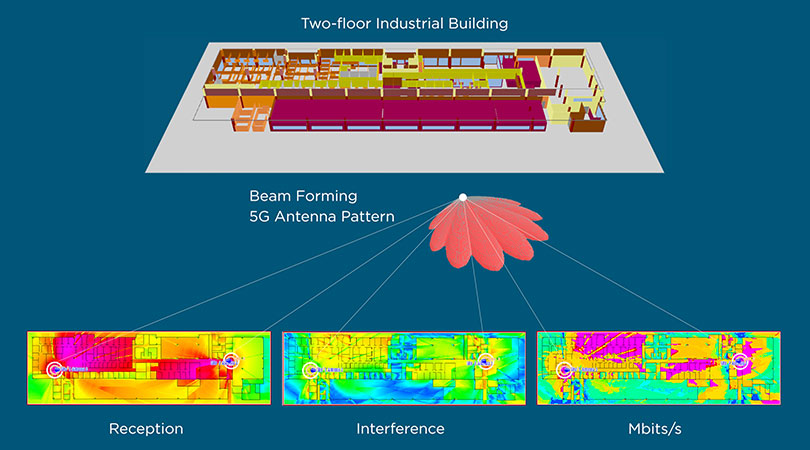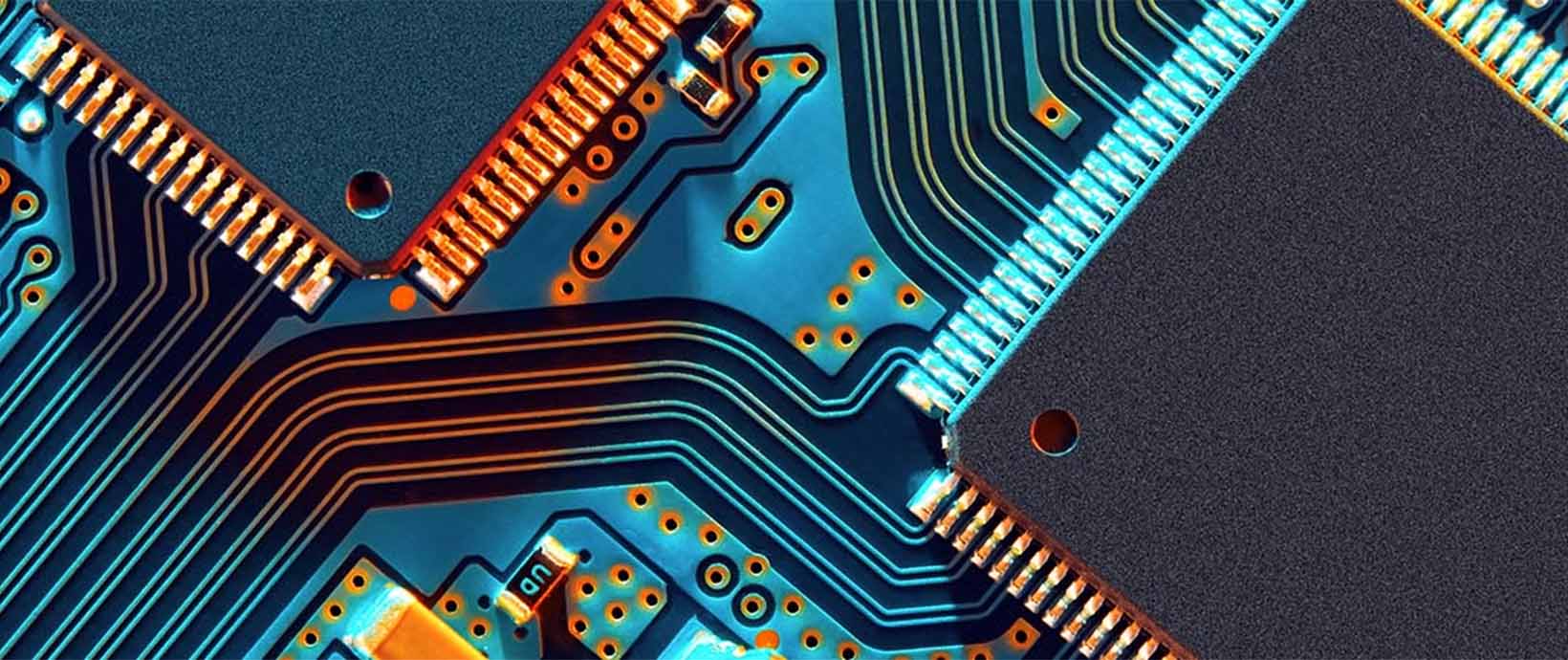Meeting the Challenges of 5G Antenna Design and Radio Coverage
The rollout of 5G communication networks promises to be a boon for telecommunications companies all over the world, but it will not come without challenges.
The expansion of the Internet of Things (IoT) and the proliferation of connected devices will almost certainly lead to massive growth in demand for mobile data. New uses like network-enabled automobiles and machine-to-machine communications will add to that demand. Lower latency (5G reaction times are expected to be no more than one millisecond) will open the door for connected devices in time-critical areas like healthcare and smart utilities. Faster speeds will result in higher data rates for users, perhaps as much as ten times higher than 4G capabilities, using the 3.5 GHz frequency bands for area-wide services and the 26-28 GHz bands for high data rate hotspots. Improved connectivity will enable a greater number of connections at once, as many as one million per square kilometer according to some estimates.
How will antenna manufacturers, wireless equipment manufacturers, automobile manufacturers and suppliers, and wireless operators rise to meet these challenges?
5G Antenna Design Challenges
As wireless technology evolved from 1G to 4G, the frequency steps were primarily evolutionary — no large technology change or discontinuity was required. The changes required for the antenna were evolutionary as well — antenna technology migrated from an external antenna to an internal one. Band requirements changed from single-band to dual-band, multi-band to multi-antenna, and antenna diversity to multiple-input and multiple-output (MIMO) implementations. 5G implementations, however, provide for up to a tenfold increase in frequencies for some applications.
This is a dramatic change from previous technologies, which will provide significant challenges as well as new opportunities. For example, beam forming and beam steering (using antenna arrays) will be possible given that, at higher frequencies, individual antennas can be much smaller. At these high frequencies, the wavelength (lambda) is around 1 cm, so the device is a multi-lambda platform. This implies that the placement of the antenna becomes much more critical, replacing the integration aspect key in previous technologies. These more complex aspects of 5G development also make it critical to try out multiple implementations to optimally identify and adjust trade-offs.
Altair FekoTM is a leading comprehensive computational electromagnetics software widely used in the telecommunications, automobile, aerospace, and defense industries, and is part of the Altair HyperWorksTM unified CAE environment for virtual product development. Because of the higher antenna gain requirements in 5G, typically antenna arrays are needed on both ends, on the mobile device, and on the base station. Besides higher antenna gains, more sophisticated feeding and control circuits are needed and a good isolation between array elements must also be achieved. Feko not only includes multiple frequency and time domain methods but it also has a set of features to accurately and quickly design and optimize antenna arrays. A bit more in detail, multiple antenna placement options and their interaction with the hosting board can be easily explored using Feko to quickly identify various trade-offs and optimization opportunities, something too expensive and time consuming to try with actual physical designs. Even complex beam forming and steering capabilities and their efficiency at different frequencies can be simulated and results easily viewed in 3D models, such as the one shown below, a 2D 16 x 16 antenna array, working at 26 GHz.

Wireless Coverage Challenges in 5G
The new 5G cellular technologies will provide consumers with data rates of up to ten times that of previous 4G/LTE. A similar trend towards higher data rates by using higher frequencies is visible for Wi-Fi implementations exploiting the 60 GHz band with standards 802.11ad and 802.11ay. For these new technologies, achieving the desired network performance in urban and indoor environments creates new challenges. Performance will depend strongly on the radio channel (and the associated frequencies used) which the urban and indoor building structures will impact. High-accuracy wave propagation models are required, for channel statistics as well as for predicting and optimizing radio coverage. Coverage needs to be analyzed for different base station deployment scenarios, different frequencies and different environments, and along different test drives. This level of testing can be difficult, time consuming, and expensive, but if not adequately explored, even more expensive quality issues and the associated redeployment cost could occur. Too much time taken in testing, however, can delay market entry and reduce profits. Somehow, the right balance needs to be achieved.
Feko provides a complete set of tools to define and model wave propagation in a variety of environments and situations important for 5G-based devices and systems. Feko’s highly accurate and fast empirical and deterministic propagation models cover a wide range of scenarios, from rural to urban as well as indoor, tunnels, and even hybrid environments. These realistic wave propagation models allow the successful deployment and optimization of the evolving radio access networks as well as to create a virtual testbed for product trade-off analysis including the antenna effect.
In 5G networks, predictions for both coverage and interference are key to judge about the capacity. Feko allows users to simulate maximum received power and achievable data rates for each location in the area of interest, computed individually for each transmission mode. Capacity limitations and overloaded cells are easily detected, and networks can be optimized to provide both coverage and high throughput. Capacity improvements due to MIMO or beam forming are accurately modeled because of Feko’s sophisticated deterministic propagation models.
Developers can even utilize Feko antenna patterns within the network coverage simulation. The illustration below shows the pattern for an outdoor, three-sector antenna, and analysis of radio coverage in an urban environment. This capability dramatically speeds-up the modeling, allowing multiple implementation cycles to optimize product characteristics.
Bringing 5G to the Smart Factory

5G technology opens the possibility for companies to explore private network and Industrial IoT (IIoT) solutions to help realize the promise of Industry 4.0. The 5G standard is the foundation for many IIoT applications, but creating a dedicated campus network with unified connectivity, optimized services, and secure communication within a specific area is a challenge for private network operators. To deliver the increased speed, low latency, and other benefits promised by 5G, telecom system integrators, engineers, and consulting companies must have efficient 5G development tools.
Altair provides integrated simulation of 5G antennas and 5G networks. Taking a holistic simulation approach, campus network planners avoid interferences upfront and prevent radio wave leakage in surrounding areas.
On the factory floor, simulating the devices, 5G antennas, and the 5G networks they are operating within, helps to create the desired communication performance for IIoT-driven manufacturing processes.
EM simulation helps to achieve the data rates required for each application and ensure optimized behavior in the network. Design changes to optimize the antenna design and positions within a device can be identified early, while avoiding EMC problems caused by wireless communication interference. Being able to precisely represent single antennas up to complete systems interacting with an environment allows a unique prediction quality and efficient design of industrial wireless applications.

Altair can also help manufacturers deploy edge compute clusters, train and execute machine learning models, implement complex application business logic, perform data transforms, visualize real-time data, and much more. To learn more about Altair’s web services and analytics tools for developing scalable IoT systems, visit the Altair IoT applications page here.
To learn more about 5G campus networks and Industrial IoT, check out this presentation by Nokia Bell Labs.
Conclusion
In an article from IndustryWeek titled, “Manufacturing’s New Frontier is Here. And the Time for 5G is Now!,” Qualcomm principal engineer Dr. Xiaoxia Zhang makes the case that, rather than primarily enabling mobile phone communication as with previous technical advancements, 5G shifts the focus significantly toward empowering smart factories. With ultra-reliable, low latency, and time sensitive networks, 5G will enable automation and accurate remote access within the factory of the future.
The transition to 5G will be a revolution for consumers and will also require technological innovations for antenna design, base station configuration, and network deployment. Software tools such as Feko will be a key element in developing successful 5G products and networks. Altair give product designers the building blocks for digital transformation, enabling them to get moving fast, scale quickly, and continue to improve their electromagnetic systems over time.
To dive deeper into 5G network planning and performance analysis, check out this webinar.




